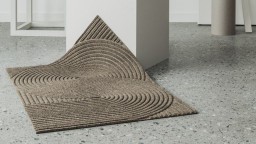Japandi is the perfect mix of two styles
Interior trends come and go. And then there are interior design styles with a timeless aesthetic that is enduring. Two of these styles have now come together: The word “Japandi” has been coined for a fusion that blends Scandinavian design with elements of Japanese home design. The trend is taking interior design blogs worldwide by storm. Find out why and how the two styles can work so well together.

Sofa Indivi from BoConcept. Photo: BoConcept
Less is more: The pared-back aesthetic of Japandi exudes elegance
Thousands of miles apart and yet so close stylistically: Japanese and Scandinavian interior design have much in common, so it was only a matter of time before the two styles converged to create a new interior trend. Japandi combines them both perfectly.
Cosiness despite its pared-back forms
Danish design and Swedish restraint meet Japanese minimalism. Japandi furniture has pared-back, linear forms. Voluminous sofas with high backrests are replaced with flat and functional upholstered furniture. Tables, chairs and shelves exude elegance with their delicate designs and clean look. In Japandi, the cosy warmth of hygge, the Danish feeling for life, slightly softens the Asian rigour. The interior decor is by no means cool: Organic forms and the rustic cosiness of wabi-sabi – the love of simplicity, patina and imperfections – come together to produce an inviting snugness in which everything is reduced to the essential.
Timeless materials
Natural materials like wood and glass are hugely popular in Scandinavian design. They convey warmth and proximity to nature. Japanese interior decor with its awareness of tradition complements this fondness for nature with natural stone surfaces such as slate, high-quality paper lampshades, and the use of bamboo. Free of modern artificial materials, interiors appear stunningly timeless.
Colours and patterns
Despite all these shared characteristics, it takes a little courage to combine the two styles and do justice to them both. While black and white dominate in Japanese interior decor, often complemented merely by a small selection of earthy shades, the Scandinavians do not shy away from pastels, mint or powerful reds. When it comes to patterns, charming Swedish floral designs meet Japanese geometry. Here it is a case of pairing the two looks subtly and with attention to detail. In case of doubt, black remains the common thread and is a timeless all-rounder in both interior trends.
Decoration and craftsmanship
Less is more – this rule applies above all else in Japanese-oriented interior design. An excess of superfluous decoration or kitsch is an absolute no-go. Yet wabi-sabi is far from unemotional. Instead, it consciously gives much-loved and imperfect objects a stage. The value of an item of furniture is derived from its quality and workmanship. Craftsmanship is highly prized in both cultures; hence artfully worked vases and hand-blown glassware have a firm place in Japandi.

Purist, Japanese furniture design by Conde House. Photo: Conde House
A successful fusion of styles
Some examples, perhaps? To illustrate the theory in practice, we have selected some items of furniture that combine the two trends brilliantly:
The Japandi interior trend: timeless design from different cultures
Japandi is here to stay. It is too harmonious and timeless to be a mere passing fad. Clearly, Scandinavia and Japan are, despite their cultural differences, very close to each other when it comes to their sense for interior design and aesthetics. Design as a medium for cultural understanding? This fusion of styles shows how it can work. Questions about globalisation and the coexistence of cultures are some of the important issues we must face as we consider how we will live tomorrow.








